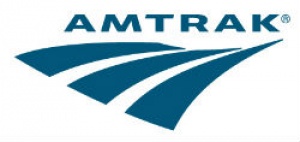Amtrak: September designated Rail Safety month in California

According to statistics kept by the Federal Railroad Administration, California holds the unfortunate distinction of having the highest number of trespasser fatalities in the nation. To reduce these tragedies, State legislators passed a bill in 2009 that designated September as “Rail Safety Month.” Each year, intercity passenger rail service and freight rail operators team up to remind the public to always be ‘Track Smart’!
“While rail safety is our daily focus, Rail Safety Month provides rail operators an opportunity to join forces to help build public awareness about rail safety,” Capitol Corridor Joint Powers Authority Managing Director David Kutrosky said. “Every rail fatality on our corridor carries traumatic emotional consequences for all involved: the victims’ loved ones, first responders, railroad employees and passengers on the trains. Remember: trains can’t swerve. Stay out of their way, observe all warning signals and cross tracks only when it’s safe.”
Rail Safety Tips
Always expect a train at every railroad crossing intersection. Freight trains do not travel on a predictable schedule and schedules for passenger trains change.
If there are rails on the railroad ties, assume that the track is in use, even if there are weeds or the track looks “rusty.”
ADVERTISEMENT
Modern trains are quieter than ever, with no telltale “clackety-clack” sound. They can move in either direction at any time. Also, an approaching train will always be closer and moving faster than you think.
Make sure to look both ways when crossing railroad tracks. If you see a train coming, don’t try to ‘beat’ it, stay off the tracks.
Cross tracks only when it’s safe and always cross at a designated crossing. Observe and obey all warning signs and signals.
Don’t socialize or “hang out” on or near train tracks.
Never walk, bike, jog, or run down a train track; it’s illegal and it’s dangerous. By the time a locomotive engineer can see a person or a vehicle on the tracks, it is too late. The train cannot stop quickly enough to avoid a collision.
Remember: Rail and recreation do not mix!

